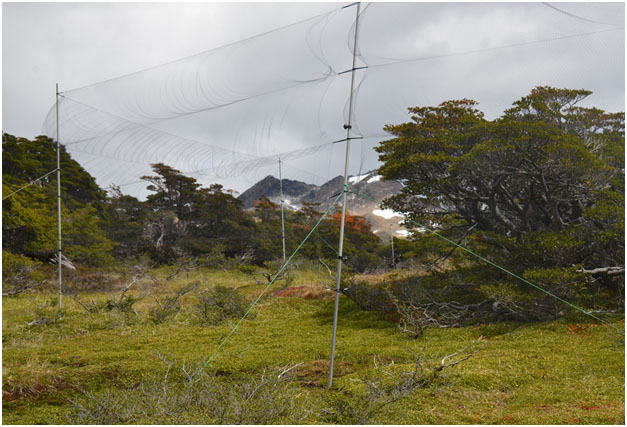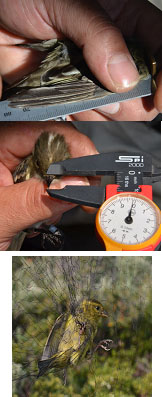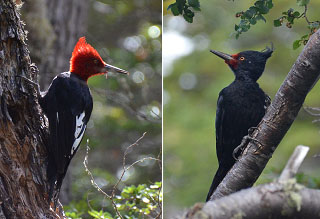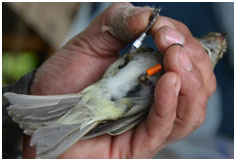BIRD RESEARCH
Our ornithological interests are diverse, constantly growing, and involve different lines of research.
Long-term bird monitoring
Since 2000 and at two different habitat types, birds have been banded at the Omora Ethnobotanical Park. Different bird species are captured through the use of mist-nest operated monthly for 3 days at the Canelo and Notro sites, using standardized methodologies and efforts. This 12+ year study is one of the longest in South America. Thus far, we have caught and banded more than 10,000 forest birds. This long-term study has rendered several papers, will provide the basis for future studies on bird population dynamics, and will allow to evaluate the impacts of global change and habitat restoration after excluding human-related threads. This monitoring program has been funded by the Institute of Ecology and Biodiversity and the University of North Texas. Several investigators have been involved in this research, which has also served as a field laboratory for field courses.


Long-term bird mist netting in the Cape Horn Biosphere Reserve.
Stacked photos shows measurement recordings of captured birds by scientists.
Magellanic Woodpecker Ecology
The Magellanic woodpecker (Campephilus magellanicus) is the largest woodpecker in South America and likely the largest throughout the American continent. Its size, contrasting colors and behavior greatly attract the attention of researchers and people. On Navarino Island this is the only woodpecker present and does so in high abundance. It feeds mainly on wood-boring larvae that extracts by persistently drilling wood in the Nothofagus forests http://www.youtube.com/watch?v=jzSay0LQUKo.
Focused on this species, we have consolidated a research line involving different universities and researchers examining the ecology of this species on Navarino Island. Currently universities involved in these studies include University of North Texas, Universidad de Santiago, Universidad de Chile, and Universidad de Magallanes. Our research focuses on gaining understanding about the spatial ecology of woodpecker families at Omora Park, population dynamics, breeding ecology, species abundance, intraspecific interactions, movement paths, and habitat selection at different spatial scales, as well as the impacts of the exotic American beaver (Castor canadensis) as habitat modifiers and the American mink (Neovison vison) as a predator. Additionally we are studying the Magellanic woodpecker as a charismatic species from the standpoint of ecotourism. We also recruit volunteer from different parts of the world to help in our research and gain professional experience in biocultural conservation.
Male and female Magellanic woodpeckers

Migratory Forest Birds
Migratory patterns of forest bird in South America are little known. The long-term monitoring of forest birds at the Omora Ethnobotanical Park has shown that several species of small birds are within the group of Austral migrant species. Although we know the abundance of these species in the region, there is scarce information on their migratory patterns, routes, and wintering grounds. To fill this gap, in 2011 we started using leading-edge technology to study the most important forest migrant species in Cape Horn. We are fitting White-Crested Elaenias (Elaenia albiceps) with light sensitive geo-loggers to study their migratory cycle. This will let us know where they overwinter, what the routes used are, movement timing, and site fidelity patterns. We are collaborating with Dr. Eli Bridge, of University of Oklahoma, who is the researcher designing and building the geo-logger prototypes that we are using. Furthermore, we are color-banding Elaenias to study their breeding and feeding ecology at Omora Park during the Austral summer.

Miniaturized geo-logger

White-Crested Elaenia with a geo-logger

White-Crested Elaenia with color bands